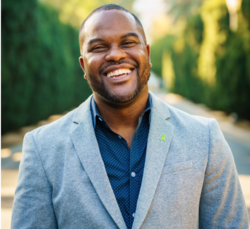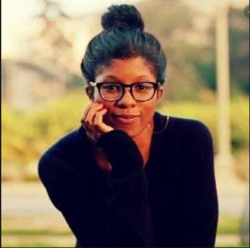Doctors and nurses at a hospital in Sacramento, California were uncomfortable interacting with a 17-year-old black youth who had suffered a gunshot wound and was paralyzed from the neck down.

“They didn’t want to tend to him, because they thought he was disrespectful,” said DeAngelo Mack, who has advocated on behalf of hundreds of black and brown youth who have been victims of violence. “My work was to explain to them, of course he’s frustrated. He’s a 17-year-old kid who will never walk again, who will never experience life the way we experience life. Of course, he’s angry.”
That was part of how Mack, the director of state policy for Public Health Advocates, was teaching the health care staff to look at the teen’s behavior empathetically -- an example of trauma-informed practice.
Mack provided that example as a framework for an Oct. 29 webinar entitled “Protected from Trauma: Advancing into the New Normal.” Sponsored by My Brother’s Keeper Sacramento, this was the second part of a Trauma Healing and Learning Series. The webinar’s focus was on the links between racism, health and trauma.
Keynote speaker Dr. Rhea Boyd, a pediatrician and director of strategy and equity of the California Children’s Trust, discussed the sociopolitical underpinnings of adversity and how they’re linked to a half century of stagnant wages for people working in non-supervisorial jobs.
And while the lack of wage increases has affected everyone, it’s hit Black boys the hardest, she said.

She cited a study by Raj Chetty and Nathaniel Hendren, among others, showing that “In 99% of families across the country, Black boys earn less in adulthood than White boys who grow up in remarkably similar families,” that is families with comparable income.
The study also showed that the income gaps were smallest in areas that had “low racial bias” and a high prevalence of Black fathers in the community. That point prompted Boyd to ponder the connection between White racism and Black fathers in communities.
One factor that Boyd says is necessary to consider is “casual forms of White racism, or “White caller crime,” a term she attributes to journalist Michael Harriot, where White people call police on Black people simply for being out in public. While those actions are condemned for being a form of harassment, Boyd says, “If that interaction results in death, incarceration or long-term hospitalization, the impact of that reverberates across an entire community.”
By overlaying maps of income inequalities and COVID prevalence, Boyd showed the intersections of racism, segregation and the health burden of communities of color. She notes that African Americans are 3.2 times more likely to die from COVID than White Americans. Latinx are 3 times more likely to die from COVID than White Americans, and the Native American population has the second highest death rate overall.
And according to the CDC, she said, 74% of the children who have died from COVID are African American or Latinx.
These racial inequities in health, she told attendees, have to be understood contextually, considering historical racism, police brutality and the constant feeling of being unsafe in one’s own community.
She showed a photo of a young Black boy with his hands raised in fear, with the National Guard behind him with their guns drawn. It’s a 1967 photo from what was called “The Long Hot Summer,” sparked by police killing a black taxi driver in Newark, New Jersey.
Nationally, one in 1,000 Black men and boys will be killed by police, Boyd noted.
“We don’t talk about how state-sanctioned violence absolutely contributes to mortality gaps and racial health inequities in this country,” she said.
In circling back to California, Boyd raised the question of whether the state’s program to screen its pediatric community for adverse childhood experiences is the best use of resources to respond to adversity caused by the violence of racism.
She cited an article by Dr. Robert Anda, one of the principal co-investigators of the original ACE study, who last March himself raised questions about universal ACEs screening.
“Despite its usefulness in research and surveillance studies, the ACE score is a relatively crude measure of cumulative childhood stress exposure that could vary widely from person to person, unlike public health screening measures, such as blood pressure, or cholesterol levels,” he said. “…the ACE score is not a standardized measure of childhood exposure to the biology of stress.” (To see responses to Anda’s commentary, see this article.)
During the question and answer period, one attendee asked how Boyd would suggest operationalizing ACEs screening, given that the “horse is out of the barn” about it. Boyd replied by talking about informed consent and informed refusal.
“Consider talking to people about the data before they share their information,” she said. “Tell them to be mindful that your responses won’t be linked to you but will be part of a larger collection of data in our state.”
But the answers could potentially have consequences in the doctor’s office. People also should be told “that what you say on the form has implications. If you check off some of these boxes, we are mandated or may feel a responsibility to refer you to child protective services. If you can let people know and they refuse the screener, that’s how clinical care should go.”
Boyd also mentioned that the ACEs Aware Initiative, which is overseeing the rollout of universal ACEs screening in California, and the California ACEs Learning and Quality Improvement Collaborative are offering training to help prepare health care providers to introduce the ACEs questionnaire to patients.
In talking about ACEs screening in California, Boyd said the money that the state is using to pay for the effort might be better spent in addressing some of the economic inequities impacting families of color. She pointed to a program that has been launched in San Francisco and is providing an extra $1,000 monthly during pregnancy to expectant mothers and for the first six months of their baby’s life.
To view the complete webinar, click here.



Comments (0)